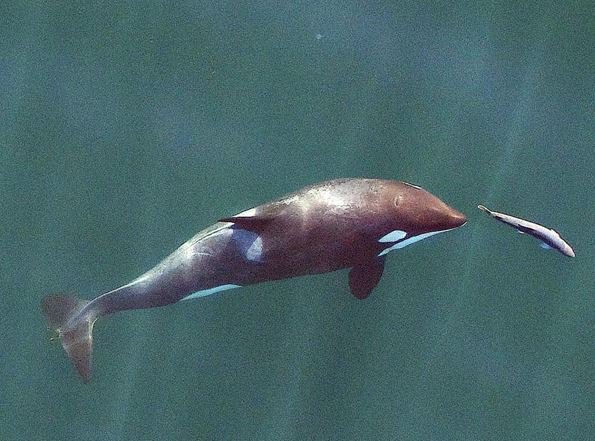Washington's Orca Task Force Recommends Protections For A Declining Species
- October 23, 2019
- John Harrison

The Southern Resident orca population in Puget Sound, part of an iconic species that is as much a symbol of the Pacific Northwest as salmon, is in trouble, and while their problems are simply stated, solutions will be difficult.
In a presentation to the Council at its October meeting, Dr. Les Purce, former president of The Evergreen State College and co-chair of Washington Governor Jay Inslee’s Orca Task Force, ticked off four intractable issues: not enough food, too much noise in the Salish Sea and Puget Sound, water pollution, and the pod’s preference for one kind of salmon, Chinook.
In something of an understatement, Purce said: “The population is flatlined and declining; we take particular note of how difficult that issue is.”
What to do?
That was the charge to the 49-member task force, which included representatives of tribes, state and federal government, the government of British Columbia, businesses, agricultural interests, and environmental organizations. The task force recently completed two years’ of work and issued a report with 36 recommendations. Some of the recommendations were issued last year and resulted in new state legislation, and more recommendations will be made to the 2020 Legislature when it convenes in January.
According to the report, the Southern Resident population travels in pods from central Southeast Alaska to central California, spending most of the year in the Salish Sea near the San Juan Islands, on the outer coast of Washington, and along the outer coast of southern Vancouver Island. The task force identified three major threats to the orcas:
- Lack of prey, primarily Chinook salmon, the largest of the salmon species in Puget Sound and the ocean. Adult male orcas need approximately 325 pounds of salmon to meet their daily energy requirements, and while orcas also will eat coho, chum, and steelhead, about 80 percent of their diet is Chinook.
- Disturbance from underwater noise, which is caused by vessels such as cargo ships, whale-watching boats, and ferries. Underwater noise masks or impairs orca communication and echolocation (the method orcas use to find their prey).
- Toxic contaminants from pollutants in the marine environment, particularly in the Salish Sea.
In its report, the task force identified four broad goals for orca recovery including:
- Increase Chinook abundance.
- Decrease disturbance of and risk to Southern Resident orcas from vessels and noise, and increase their access to prey.
- Reduce the exposure of Southern Resident orcas and their prey to contaminants.
- Ensure that funding, information and accountability mechanisms are in place to support effective implementation.
“If you have ever seen an orca in the wild, you know first-hand how wonderful these animals are,” Purce said, adding that orcas are particularly important to tribes. The current Southern Resident population numbers just 74 animals, the lowest in 30 years, and is listed as an endangered species.
Purce said the task force’s initial recommendations, made in 2018, included proposals for increasing the number of Chinook salmon in the Sound and the ocean; reducing vessel noise, including noise from cargo ships, whale watching tours, and U.S. Navy operations; and reducing water pollution. Some of these resulted in new legislation, others were set aside for further investigation, including $750,000 in the state budget for, according to a policy brief issued by Inslee’s office: “… a stakeholder process to discuss the associated economic and social impacts — as well as mitigation costs — of the potential breaching or removal of the Lower 4 Snake River dams … to increase Chinook for Southern Resident orcas.
Stephanie Solien, vice chair of Puget Sound Partnership who co-chaired the orca task force with Purce, said the 2019 recommendations will address emerging issues such as the potential impacts of climate change, and population growth.
Solien said that through the task force’s recommendations and actions by the Legislature, increased hatchery production of salmon has been authorized, ship and boat traffic near orcas in Puget Sound has decreased, laws to ban toxic chemicals and clean up spills have been strengthened, removal of fish passage barriers has been authorized, and salmon spawning habitat is being improved.
“Orcas are canaries in the coal mine,” she said. “What happens to them will affect many other species, and also affect us. By protecting orcas, we also protect our quality of life in the Northwest.”
Council Chair Jennifer Anders told Purce and Solien, “the issues you raise are familiar territory for many of us.” Council Vice Chair Richard Devlin said “the issues you are dealing with and the issues we deal with are in some ways the same and in some ways different. Five or six years ago the ocean changed, predation increased, and now the [salmon] returns are as low as they have been in 15 years.” He noted that the task force report says the number of reproductive-age female orcas is low and that “a lot of the actions will take 10-15 years, but you may not have that long.”



